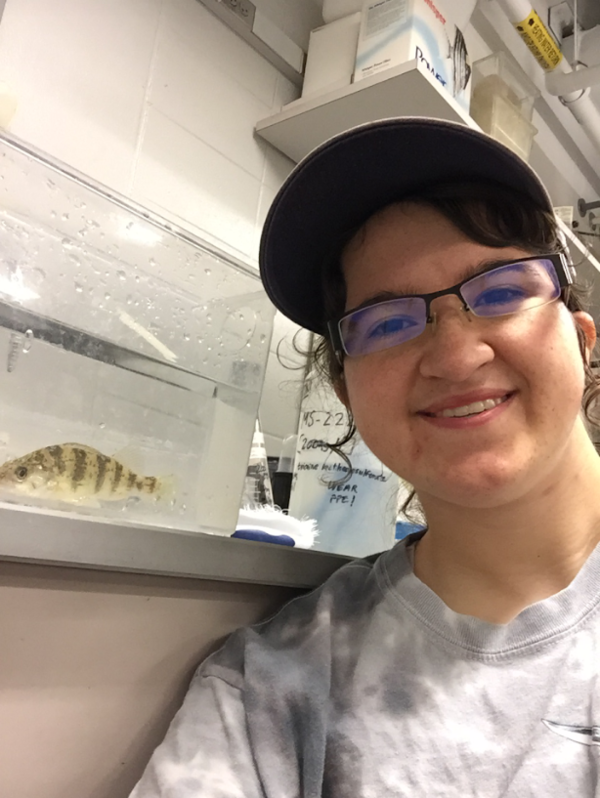Physiological Effects of Microplastic Ingestion on Yellow Perch (P. flavescens)
- Student
- Laura Matthews
- College(s)
- College of Science
- Faculty Advisor
- Gary Lamberti
- Class Year
- 2019
 Laura poses with a Yellow Perch specimen
Laura poses with a Yellow Perch specimen
Microplastics are plastic particles <5 mm in diameter that are now ubiquitous in aquatic ecosystems and do not readily degrade. Because microplastics are ingested by animals and can bioaccumulate in aquatic food webs, they may directly impact physiological function.
Unfortunately, the physiological impacts of microplastics have received little research attention but are pertinent to prioritizing the regulation of microplastics in the environment. My research examined how yellow perch (Perca flavescens) physiology can be affected by microplastic ingestion.
A 40-day feeding experiment was conducted with three treatment groups: (1) normal diet of food pellets (100%), (2) 90% normal diet, and (3) 90% normal diet injected with 10% sterile microplastics. These treatments were also contrasted with fish that refused to eat (0% normal diet). We found no significant differences among the treatment groups for changes in fish length, mass, condition, or respiration rates. We observed that microplastics passed through the intestines as undigested material without accumulation. These results suggested that low levels of microplastic ingestion have little effect on fish health and growth. However, the impacts of microplastics may be more subtle or complex than this study could measure.